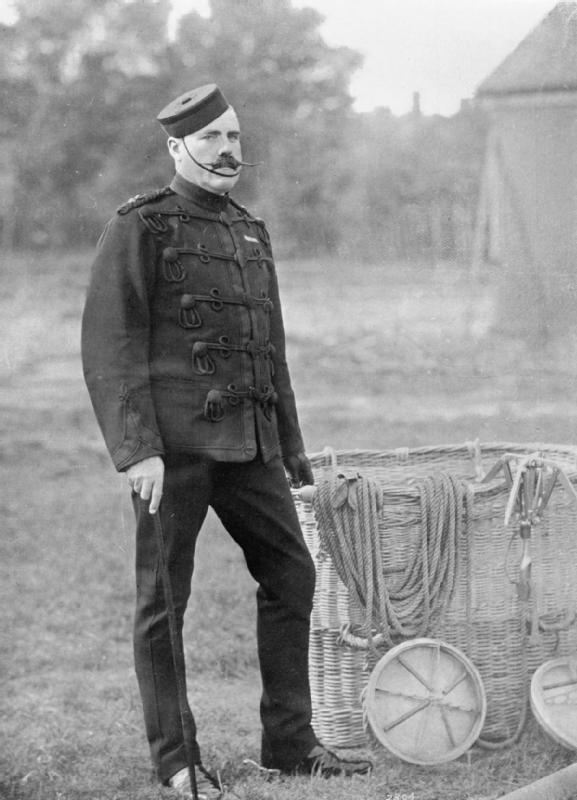BALLOON OVER RAINHAM
On June 12th 1889 the Chatham & Rochester News reported that "the inhabitants of the little town of Rainham were aroused from their usual quietude by the appearance of a monster balloon to the delight of numerous onlookers a descent was made, both old and young seemed quite amazed at the novel sight". As early as 1880 a successful balloon flight had carried three passengers all the way from Ashford to Crediton in Devon.
Balloons, however, were not altogether unknown in this area, for one of the pioneers of military ballooning, Major James Templer, had bought Abbey Court Farm (then apparently known as Lidsey Farm) at Lidsing in 1883. Templer, together with Captain C.M.Watson, had started an army ballooning school at the Royal Arsenal in Woolwich in I878, using his own balloon ‘Crusader’ and a grant of £150 from the military authorities. The whole operation was transferred to Chatham a year later, and it was from the RE Barracks that cylinders of hydrogen were carried by wagon to Lidsing, where in accordance with Templer’s orders a deep pit had been excavated near The Harrow, from which a balloon could be inflated and launched. A separate wagon carried the balloon itself, together with a drum on which was coiled the wire rope (incorporating a telephone wire) which would anchor the inflated balloon to the wagon.

The use of balloons for military reconnaissance was already well-established - the French employed them during the Napoleonic Wars, and they had also proved useful during the American Civil War. When British Forces were fighting in the eastern Sudan in i885 a detachment of balloonists from the Royal Engineers under Major Templer took part. A contemporary report related that on the 25th March ‘a balloon accompanied the convoy to the zeriba [a fortified camp], and probably frightened the natives, as no attack was made’. Unfortunately high winds generally made it impossible to employ the balloon, The Chatham & Rochester News had carried an item about Major Templer in April 1888, when the soldier had been court-martialled at Brompton Barracks charged with ‘disclosing secrets of military ballooning to persons unknown’ (believed to be connected with the ltalian Government). But he was honourably acquitted, and obviously no stigma was attached to his name, for he married the following year. Templer’s men were unkindly referred to as ‘Balloonatics’, and certainly flights were not without risk.
ln December 1881 Templer and two others (Mr.A.Gardner and Mr Walter Powell) were carrying out meteorological observations: air temperature at different heights and amount of snow in the air. They set out from Bath and travelled over Somerset and Dorset, but as their vessel approached Bridport the wind threatened to carry it out to sea. They attempted to land and Templer jumped out, holding the valve line, and tried to release the valve. The reduction in weight lifted the balloon several feet off the ground so that when Gardner jumped, he broke his leg and the balloon rose still higher, Templer, desperately trying to maintain hold of the line, urged Powell to climb down, but the rope was torn from his hands, and Powell, himself a keen balloonist with his own balloon and a private gasworks to inflate it, was carried away, never to be seen again.
Despite such incidents many flights were very successful. as the Rainham occurrence demonstrates, and the British Army continued to experiment with both balloons and giant kites. An article in Bygone Kent (Vol.l6 No.8) has several excellent photographs showing army wagons and balloons, and remarks that it was not unusual to see these over Lydd, ‘with one, two, or even three men suspended from them in light baskets’. Ballooning at Lidsing, though, had ended by the close of the nineteenth century.
RAD





































































































